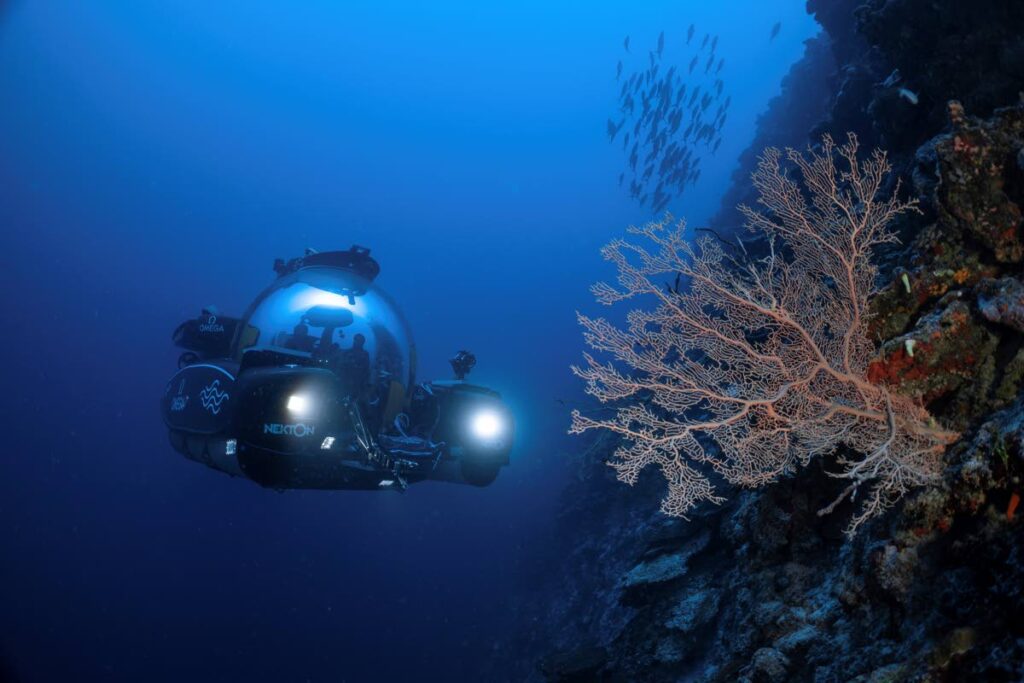Tales from the Edge

Anjani Ganase brings the latest biodiversity news: warning that systems are collapsing from the poles to the tropics; and that human intervention can make a difference.
The tale of vanishing snow crabs
In Alaska, the snow crab harvest in October was cancelled suddenly over fears of a crash in the snow crab population in the Bering Strait. The sudden drop in population came as a surprise to both fisherfolk and scientists alike, after the booming population of over 11 billion crabs surveyed in 2018 as part of the annual shellfish assessment programme done by the Alaska Fisheries Science Centre, NOAA.
The snow crab population in 2018 – was this the first warning? – was way above average but by 2019, the number dropped to half the amount; and by 2021 fewer than 940 million crabs remained. This is a loss of over 91 per cent of the population over three years. Scientists couldn’t quite understand it, so in 2022 they surveyed again but covered a larger area including farther north and west, closer to Russian territory. Such a sudden and enormous loss in population is known as a mass mortality event and is likely related to climate change. Ocean temperatures in the polar regions have been heating up at a much faster rate compared to other parts of the world. The typical temperature of snow crab habitats is about 1.3 C, but since 2016, the average ocean temperature shot up to 3.5 C, way above the norm.
Scientists speculate that the higher temperatures may have permitted ocean predators from warmer areas to invade and prey on the snow crabs. Other theories purport that limited food resources (possibly through ocean warming) incapable of sustaining the large crab population resulted in the population crash. For an industry that brings in about US$200 million in revenue annually, the crash is devastating, especially as other fishing industries, including halibut, cod and pollock, have been lost to overfishing, disasters such as the Exxon Valdez oil spill and global warming.
Adapting to avoid extinction
Paleontologists (scientists who study ancient ecosystems through fossils) comparing modern day populations of megafauna (large animals) in forested south east Asia with ancient populations have noted that a handful of species are defying the trend to extinction. Human development typically results in “trophic downgrading” of surrounding areas, which means there is the loss of large animals, typical apex predators, because of over exploitation, diminishing prey or habitat loss that may have cascading ecological consequences. One example is the loss of top predators – sharks, groupers – on coral reefs.
Scientists instead found that although many large animals were dwindling in numbers in present day Asian forests, there is a handful of large animals with increasing populations, especially close to urban areas. In particular, four animals – tigers, Asian elephants, wild boars and clouded leopards – have larger populations closer to urban centres because of human champions against poaching in national protected areas and close proximity for frequent visits by tourists.
As many of the areas become urbanised, these animals suffer from habitat loss. Success in rebounding populations have been seen in Singapore, whose anti-poaching laws work in tandem with active forest restoration. These have resulted in the boosting of the Sambar deer and wild boar populations.
The trapping zone in the Maldives
A new ecosystem in the Maldives was recently discovered by The Nekton Maldives Mission to survey all ocean life around the Maldives from the surface down to 1,000 metres. Investigation of ocean subterrains found an undescribed biodiversity hotspot about 500 metres deep. The ecosystem was swarming with small marine micro-nekton (swimming ocean creatures) that drew many large predators, including sharks and large fish, to the area. The nekton was largely composed of micro-organisms that carry out a daily vertical migration through the water column. During the night, the nekton ascends close to the surface to feed and then descend during the daylight hours to avoid being preyed on. Along the edge of the Maldivian atoll, there are subvolcanic structures that prevent the nekton from plunging to the deep, trapping them along the submerged shelves and creating a food rich environment for many other organisms to feed on, hence the name the trapping zone. Other findings of the Mission reveal an ocean rich in marine life and ancient beach lines when the sea levels were much lower some 200,000 years ago, as well as deep sea refugia.
Cruising spreads disease through the Caribbean
Caribbean coral reefs have been infected by a multitude of diseases that have resulted in mass die off events of certain species across the region since the 1970s. Scientists found that warming ocean conditions encourage emergence and rapid spread of diseases across the region. A recent study suggests that the spread of the stony coral tissue loss disease – that has been ravaging brain and boulder corals in the Caribbean since 2014 – is likely to be spread through the ballast water of ships. The typical rate of transmission via ocean currents is speeded up by the movement of ships. Experiments reveal that UV treatment of the ballast water to remove harmful pathogens marginally limited the spread of the disease to coral under experimental conditions. Holding the ballast water for prolonged periods also seemed to concentrate the infection effect on certain species of corals. Considering the large scale of marine transportation throughout the Caribbean – cruise ships, yachts, cargo vessels and ferries – more needs to be done to curb the spread of diseases. Consideration needs to be given to suitable treatments of ballast water between ports. Tobago is now welcoming cruise ships that visit islands that have the stony coal tissue loss disease and our seas are therefore at high risk of being infected in this way.


Comments
"Tales from the Edge"